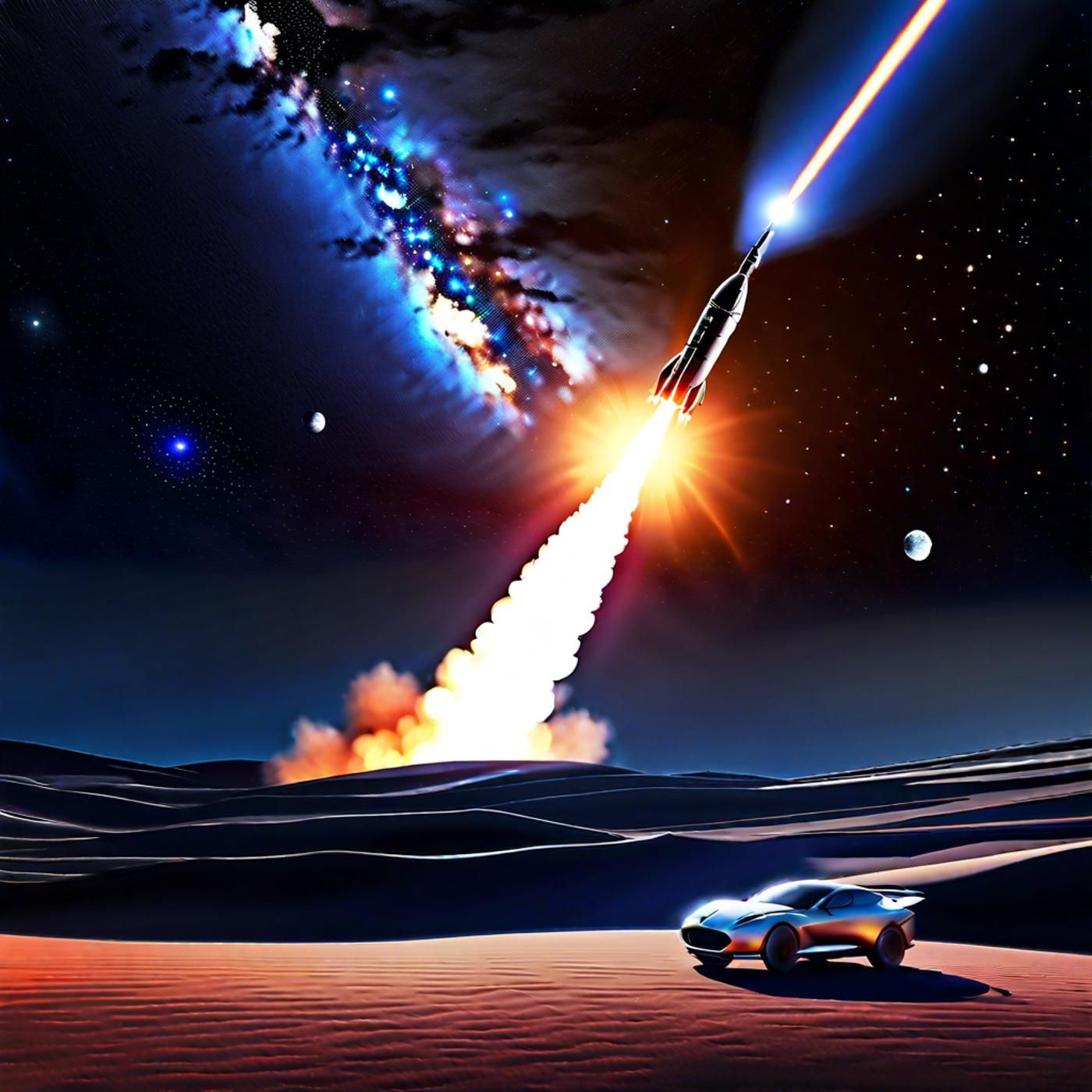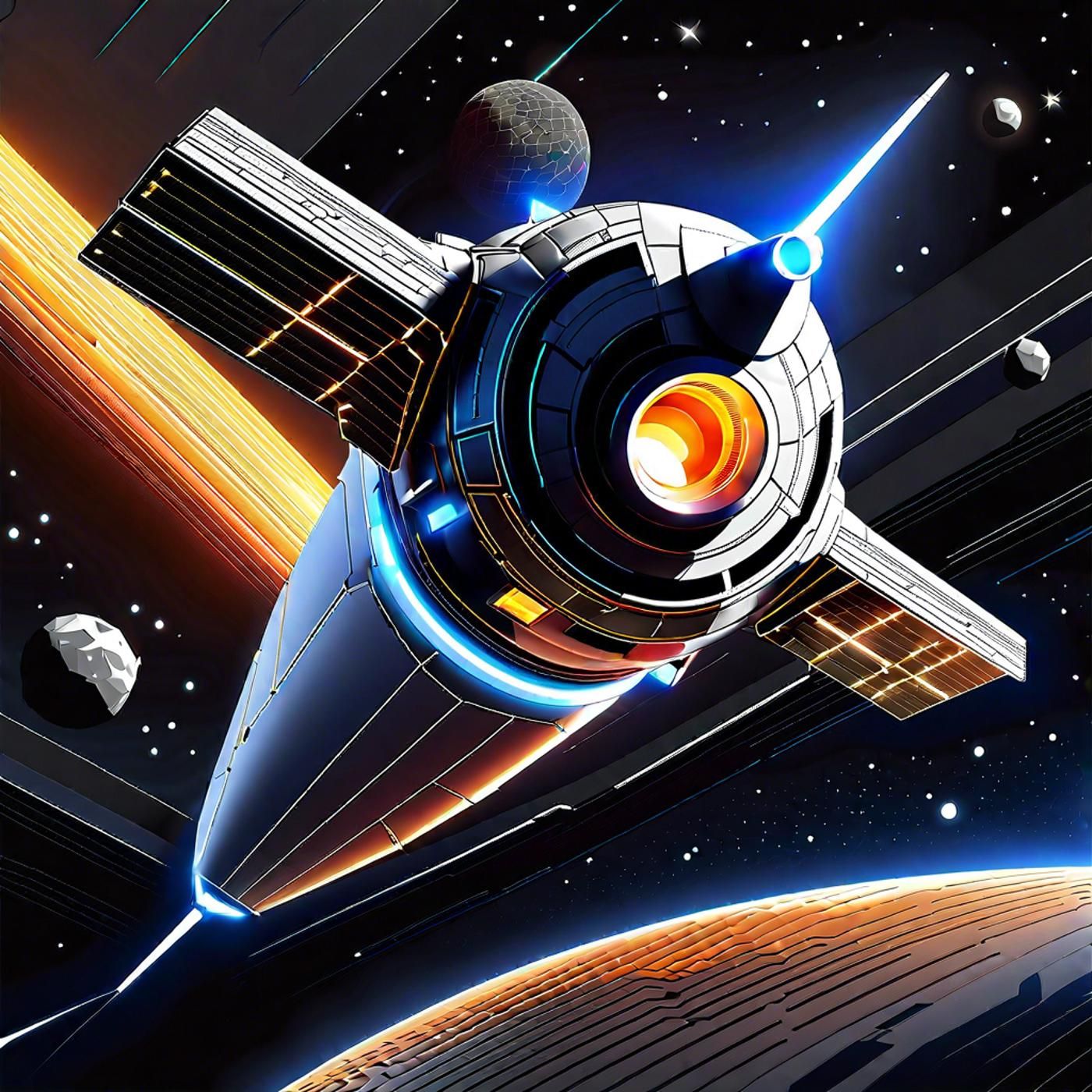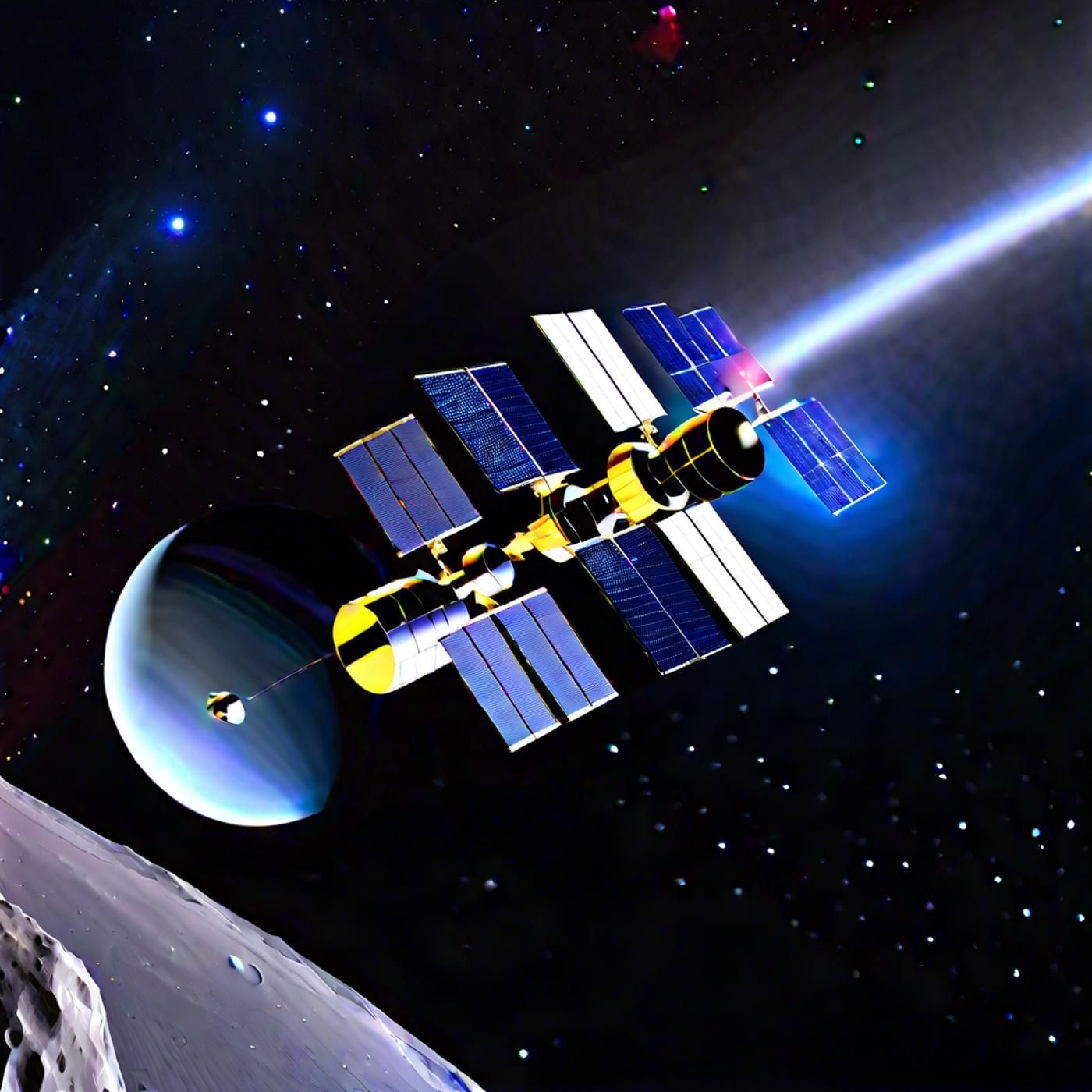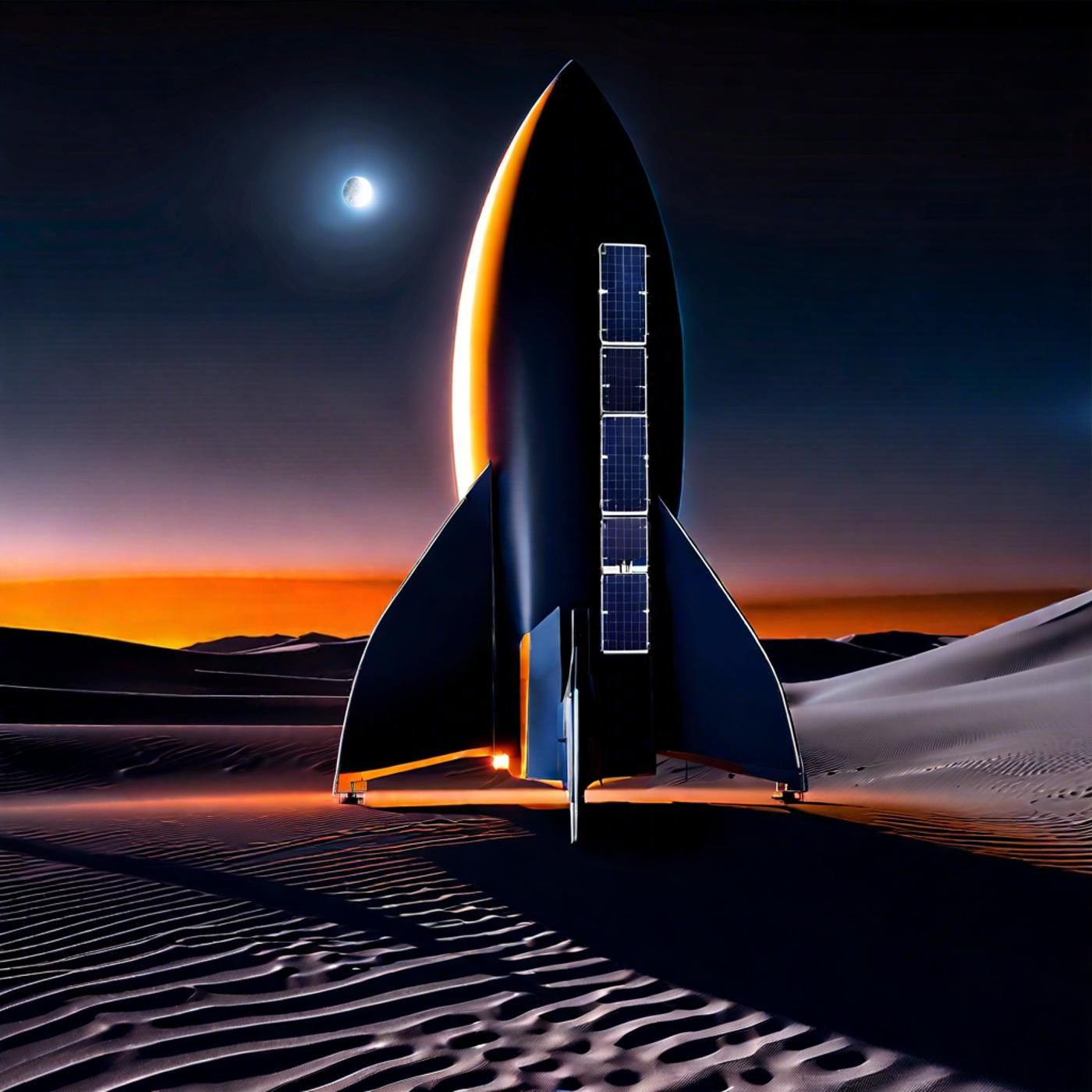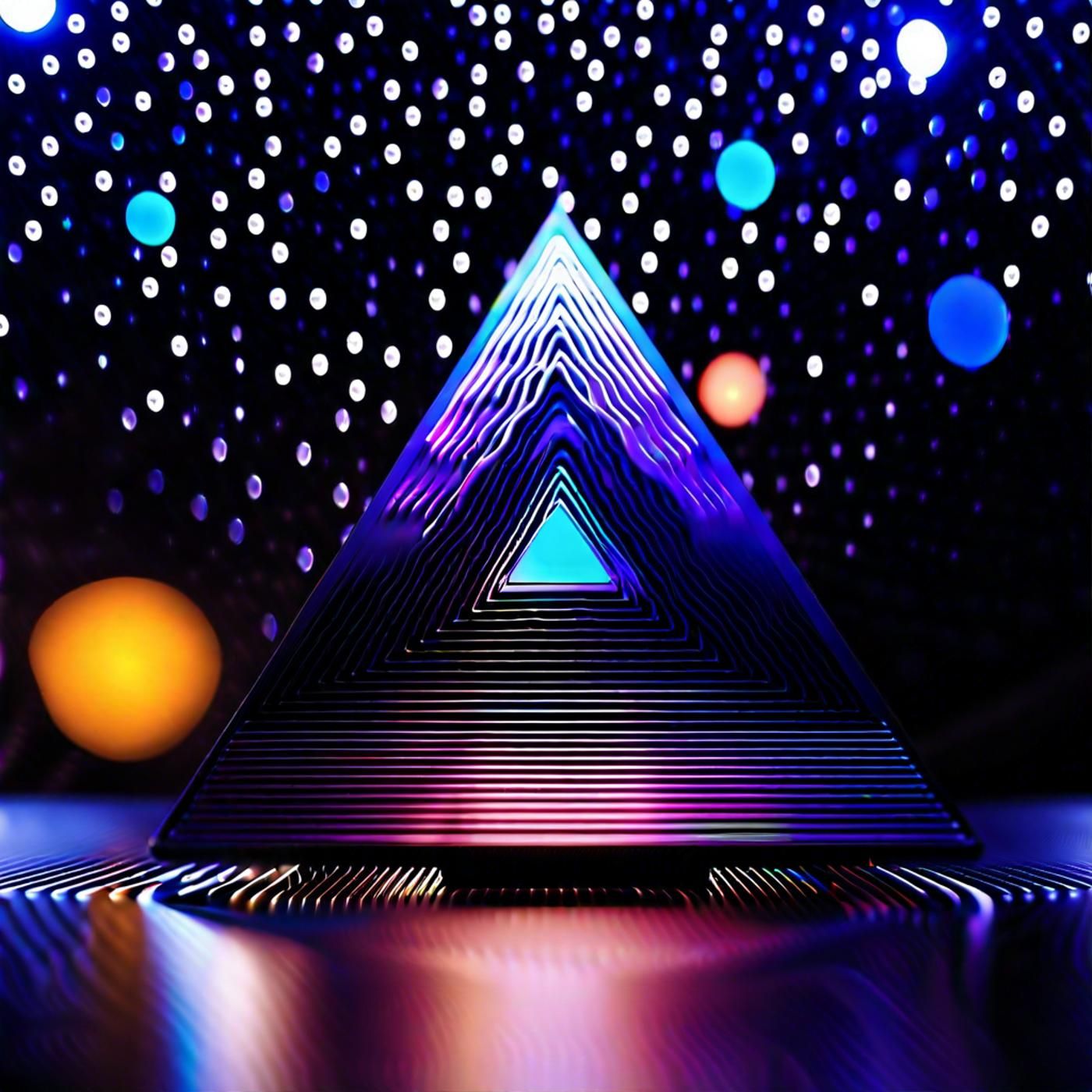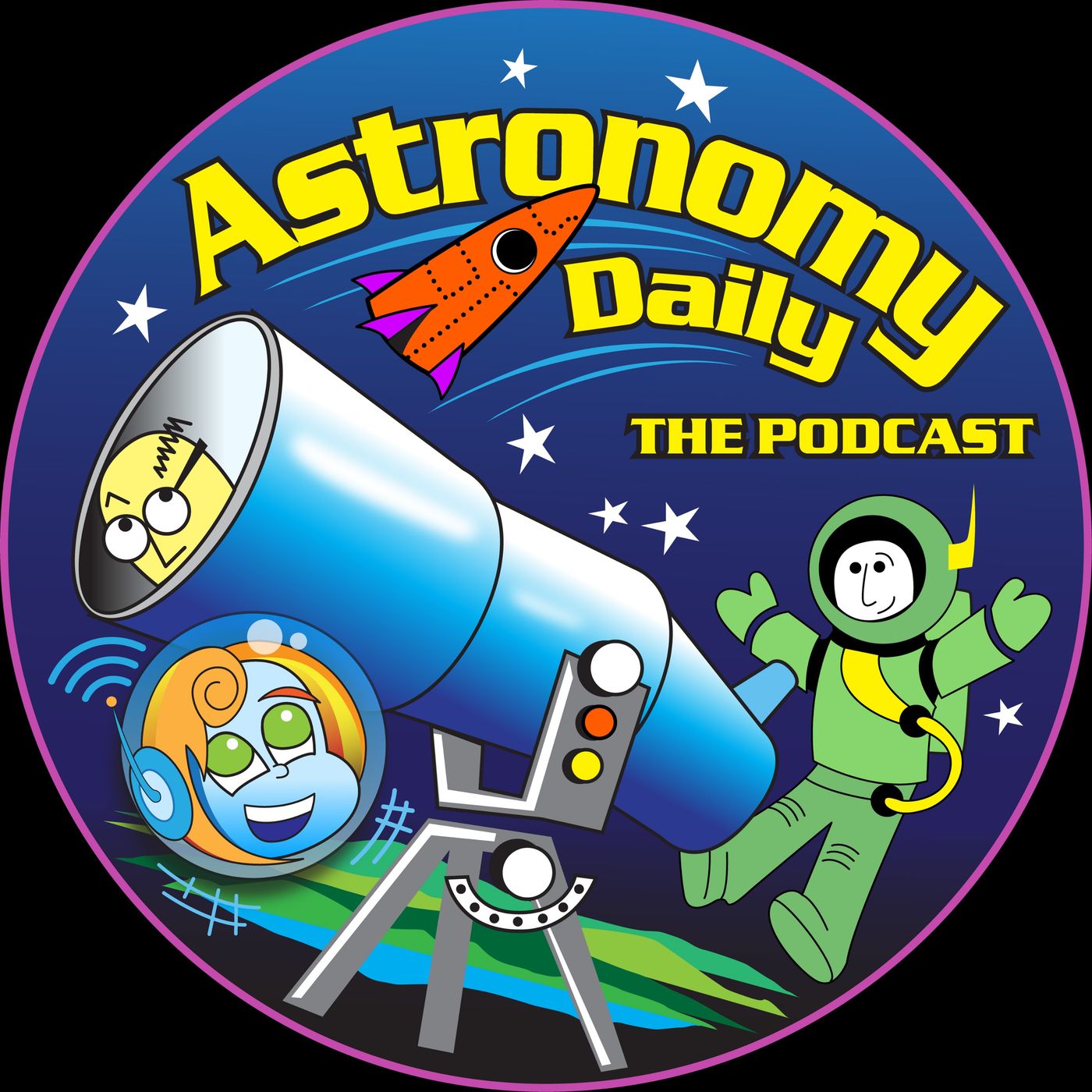S03E91: Starliner’s Extended Stay & Russia’s Space Station Ambitions
Welcome to Astronomy Daily, your daily dose of the latest news in the world of astronomy and space exploration. I'm your host, Anna, and I'm here to guide you through today's top stories. Whether you're a lifelong space enthusiast or just curious...
Welcome to Astronomy Daily, your daily dose of the latest news in the world of astronomy and space exploration. I'm your host, Anna, and I'm here to guide you through today's top stories. Whether you're a lifelong space enthusiast or just curious about the universe, we've got you covered.
Today we'll explore NASA's extension of Boeing's Starliner crew flight test, Russia's ambitious plans for a new orbital space station, and a busy schedule of launches for early July. We'll also delve into the success of NASA's Hera Mars simulation, a fascinating find of SpaceX Dragon space junk in North Carolina, and celebrate 50 years of astronaut ice cream.
Let's dive into the cosmos together.
For more Space News and all our podcast episodes visit https://www.astronomydaily.io
https://www.bitesz.com
Support our sponsor NordVPN...for up to 72% off (you read that right) visit https://www.bitesz.com/nordvpn
Become a supporter of this podcast: https://www.spreaker.com/podcast/astronomy-daily-the-podcast--5648921/support.
Astronomy Daily brings you the latest news in astronomy and space exploration
Anna: welcome to Astronomy daily, your daily dose of the latest news in the world of astronomy and space exploration. I'm your host, Anna, and I'm here to guide you through today's top stories. Whether you're a lifelong space enthusiast or just curious about the universe, we've got you covered. Today we'll explore NASA's extension of, Boeing's Starliner crew flight test, Russia's ambitious plans for a new orbital space station, and a busy schedule of launches for early July. We'll also delve into the success of NASA's Hera Mars simulation, a fascinating find of SpaceX dragon space junk in North Carolina, and celebrate 50 years of astronaut ice cream. Let's dive into the cosmos together.
NASA has announced an indefinite mission extension for Boeing's Starliner capsule
NASA has announced exciting news for Boeing's Starliner capsule, which is currently docked at the International Space Station, or Issenna. Initially, the mission was planned to last 45 days, but now it looks like that might just be the beginning. Thanks to the capsule's outstanding performance and comprehensive testing of, its reaction control system thrusters and helium leaks, Starliner may be orbiting for a much longer period. The Starliner capsule launched on June 5 and is now on an indefinite mission extension. This means the spacecraft could remain docked at the ISS beyond the planned 45 days. Why the change? Well, Starliner is performing beyond expectations. Its good condition and the stability of the helium leaks make it a candidate for an extended stay in space. However, NASA and Boeing are still investigating why some of Starliners thrusters experienced issues during its approach to the ISS. These problems have prompted additional ground testing to pinpoint the exact cause on June 15. In orbit testing couldnt precisely determine the root cause of the thruster issues, although some progress has been made, the helium leaks have been stabilized and most of the problematic thrusters have been deemed safe for use. Out of Starliner's 28 thrusters, five experience malfunctions, but only one will remain offline for the remainder of the mission. This added time in orbit allows engineers to gather critical data for future service module design improvements, which will be necessary for more extended missions planned for as soon as 2025. Steve Stitch, the manager of NASA's commercial crew program, remarked that the original 45 day limit was constrained by the crew module batteries of Starliner, which are now being recharged by the ISS. Therefore, the risk for the second set of 45 days is no different from the first set. The significance of this mission lies in its role as the crew flight test CFT, which is essentially a litmus test for Starliner's future missions. This capsule has the potential to stay in orbit for as long as 210 days once it's fully operational. The current mission is pivotal because it's only the spacecraft's third venture into space and it's first with astronauts. Before this flight, the battery's efficiency was tested on the ground and no problems were found. Now, the performance in flight will give NASA real time data that is crucial for planning future missions. Starliner's current crew comprises two seasoned NASA astronauts, Butch Wilmore and SUNY Williams, who bring decades of experience to this test flight. They've been instrumental in operating the spacecraft and providing real time feedback. Both astronauts have rich backgrounds as test pilots, which have proven invaluable for assessing Starliner's performance in space. With the extra testing and analyses being conducted at the White Sands test facility in New Mexico, there's a hope that any lingering issues can be resolved comprehensively. The ground tests are aimed at duplicating how the thrusters performed during the flight and docking, allowing engineers to understand better why these elements misbehaved. In the meantime, Wilmore and Williams are not just sitting idle, they are actively supporting other ISS astronauts with a variety of tasks, from orbital plumbing to organizing the permanent multi purpose module and even working on the japanese experiment module. This is not Starliner's first dance with space. Its first two missions were uncrewed with the initial attempt in December 2019 not reaching the ISS due to computer glitches and the second mission in May 2022 encountering similar thruster issues. This mission aims to resolve those issues, setting the stage for longer, more routine missions. In summary, the extended stay of Boeing Starliner capsule at the ISS marks a significant achievement in spacecraft testing and safety. As both NASA and Boeing continue to analyze and resolve the issues, we can look forward to a future where regular six month rotations using the Starliner could become the norm. This mission stands as a testament to the advancements and resilience in space exploration, bringing us closer to a future where space travel becomes a regular occurrence.
Russia plans to construct a new orbital space station by 2030
M Russia is setting ambitious goals to advance its space program with plans to construct a new orbital space station by 2030. Roscosmos the Russian Space agency has officially laid out a detailed timetable for the creation of a four module core, which will serve as the foundation of this new orbital endeavor. This new station marks a pivotal shift as Russia aims to pursue space exploration independently, breaking away from its long standing collaboration with the International Space Station. The initial development stages are set to commence with the launch of the first scientific and energy module in 2027 by the year 2030. The plan is to add three more modules, creating the core structure of the space station. Between 2031 and 2033, two additional modules will be incorporated, further expanding the station's capabilities. Roscosmos, led by Yuri Borisov, signed off on this ambitious timetable alongside the directors from 19 key enterprises involved in the station's creation. Russia's vision for the new space station goes beyond mere national pride and technological progress. It aims to address scientific, technological and security challenges that are currently limited by the parameters of the existing ISS and international agreements. For decades, Russia has been a vital partner in the ISS, working closely with the United States and other nations. However, with the ISS nearing the end of its operational life and geopolitical tensions rising, Russia announced plans to exit the ISS project by 2028, ending a, mutually beneficial collaboration. The new station signifies Russia's resolve to maintain its presence and leadership in space exploration. Apart from designing and manufacturing the modules, Roscosmos schedule includes testing a new generation crewed spacecraft and developing new rockets and ground based infrastructure to support these future missions. Despite setbacks in the past, like the failure of a lunar mission last year, Russias dedication to its space program remains robust. With the legacy of being the first nation to send a human into space, Russia continues to capitalize on its rich history in space exploration exploration while paving the way for future advancements. With this new station, Russia seeks to solve complex problems and push technological boundaries further than before. It stands as a testament to the enduring spirit of exploration and innovation that has defined the russian space program for decades. Stay tuned for more updates on this exciting project as it unfolds.
The first week of July is packed with exciting launch activities across the globe
Moving into the second half of 2024, the first week of July is packed with exciting launch activities from around the globe globe. Kicking off the week, we witnessed the third launch of the japanese h three rocket. This mission, which took place in the early hours of Monday morning UTC, continues to highlight Japan's growing capabilities in space exploration and satellite deployment. Next in line SpaceX is gearing up for two Starlink missions, pushing the number of Starlink satellites launched to over 6700. These missions are scheduled to lift off in quick succession, providing an enhanced Internet service with global coverage. The first mission aims for a Wednesday launch from Cape Canaveral Space Force station. The second follows closely set to launch from the Vandenberg Space Force base in California. These new satellites will strengthen SpaceX's already robust Starlink constellation, bringing Internet access to even more remote areas of the world. China also has a busy schedule this week with two significant launches. First up is the flight of the hyperbola. One rocket by ispace which has now been moved to Friday. This mission will mark the first flight of the year for this particular launch vehicle. Immediately following, China will launch another mission with their Changjiang six A rocket. Both missions promise to further underline China's rapid advancements in space technology and their commitment to expanding their satellite network. Adding to the week's activities, SpaceX is preparing to launch Turkey's first large communications satellite, Turksat six A, on Monday. This mission is notable not just for its payload, but for marking Turkey's entry into the high stakes world of advanced communication satellites. The satellite will enter geostationary orbit, providing extensive data relay capabilities over Europe, the Middle east and much of Asia. Moreover, we're keeping an eye on Firefly aerospace, which had originally planned to launch its Alpha rocket on Tuesday night from Vandenberg Space Force base. Known as the noise of summer mission, this launch has now been postponed. The mission aims to deliver an array of cubesats to orbit under NASA's venture class launch services demonstration, two contract supporting educational and nonprofit organizations with an interest in space exploration. In a remarkable milestone, this week also marks the first anniversary of the final flight of an Ariane five. Its successor, the Ariane six, is now primed for its maiden launch next week. This launch will be a significant event for the European Space Agency, heralding a new era of european space capability. One of the more dramatic events this week involves space pioneers Tianlong three rocket during a static fire test, the first stage of the rocket unexpectedly lifted off the pad and was destroyed shortly after. This incident dealt a setback to the chinese company, which had been targeting an orbital launch in the coming months. Despite the mishap, space Pioneer remains committed to advancing their rocket technology.
First half of 2024 saw 124 orbital launch attempts carrying 14 crew members
As we take stock of the first half of 2024, global space activity has remained robust. We saw 124 orbital launch attempts carrying 14 crew members and over 1330 payloads into orbit. The United States and China accounted for the lion's share of these launches, with SpaceX alone responsible for more than half of all launches from the US. Their ambitious goal for 2024 remains to conduct 148 launches, an objective that still seems within reach if they maintain a consistent, consistent launch pace. One standout moment was the Falcon nine block five booster from SpaceX, which reached a milestone of 22 flights during a recent mission from Cape Canaveral. The booster's continued reliability underscores SpaceX's success in rocket reusability, making space more accessible and cost effective. As we look forward, the pace and scale of launches worldwide Signal A, thrilling second half of 2024. Each mission, whether it's deploying satellites, testing new rockets, or sending supplies to the ISS brings us closer to the boundless possibilities of space. Stay tuned to astronomy daily for updates on these and other exhilarating space missions.
NASA's Hera crew recently completed a 45 day simulated Mars mission
NASA's Hera crew recently wrapped up a 45 day simulated Mars mission, and the results have been nothing short of groundbreaking. Four courageous explorers, Jason Lee, Stephanie Navarro, Sharif al Rameythi, and Piyumi Wijisakhara, undertook this mission, testing the edges of human endurance and collaboration within NASA's Hera Habitat at the Johnson Space center in Houston. Their mission part of Hera's campaign seven, mission two is a pivotal step forward in understanding how future astronauts might react to the isolation and confinement of deep space travel. Throughout the mission, the HEra crew engaged in various operational tasks and participated in 18 human health studies. These studies delved into behavioral health, team dynamics, and human system interfaces. Significantly, seven of these studies were collaborative efforts with the Mohammed bin Rashid Space center of the UAE and the European Space Agency. The rigorous experiments assessed the crew's physiological, behavioral, and psychological responses, mirroring the conditions they might face on a real mission to Mars. As the mission drew to a close, the crew watched real footage from the Artemis I mission to simulate their reentry and landing experience. This innovative approach helped them mentally transition from their 45 day seclusion back to the reality outside the simulated habitat. HERA operations lead Ted Babbic marked the successful completion of the mission by ringing a bell outside the habitat nine times, seven for the campaign and two for the mission. Babak's ceremonial act included presenting the crew with their mission patch, which they proudly placed on the door of the Hera habitat. Babak proclaimed wishes for a safe passage to Mars and a safe return to Earth, emphasizing the importance of the lessons learned and the hope they bring for future missions. The crew expressed heartfelt gratitude to everyone involved, rallying thanks to NASA and the Mohammed bin Rashid Space center, the Hara Mission Control Center, NASA's human research program team, the analog mission control medical teams, and their friends and families. Wiha Saqqara summed up the experience by calling it one of the best she's ever had and lauding her crewmates for making it memorable and enjoyable.
NASA's Hera Mars simulation has provided invaluable insights into human endurance and teamwork
A highlight of the mission was a live q and a session with students held just three days before the crew's egress. About 200 students gathered at Space Center Houston's theater to quiz crew members Al Ramethi and we Jessicara. They discussed the importance of team dynamics, how they adapted to unexpected situations, and the coping mechanisms they developed for isolation. When asked why she applied for the mission, we Jessicara explained her motivation to help. NASA collected data that would aid future long duration space flights, highlighting its usefulness for the Artemis missions and potential Mars expeditions. Inside the Harrah habitat, mealtimes became bonding opportunities where the crew shared stories, laughter, and mutual support. We Asakara advised the students on the importance of spending time with one's crewmates and being a good listener to build strong teams. Al Ramethi pointed out that personal items, books, and board games provided mental comfort during their isolation, while the hum of instruments running became white noise to the crew. The crew had unique experiences, such as performing spacewalks and flying drones on Mars through virtual reality. The habitats window screens displayed simulated views of space and the martian landscape, enhancing the sense of immersion challenges faced within the analog environment. Communication delays instilled valuable lessons in teamwork, patience, and planning. The crew utilized a 3d printer to resolve equipment issues, and they had a contingency plan for outside emergencies. Daily medical evaluations and nutrition specific meal plans were also pivotal components of their experience. The addition of hydroponically grown lettuce and four pet triops, shrimp named Buzz, Alvin, Simon, and Theodore provided both sustenance and a bit of levity. Reflecting on the simulation, al Ramethi mentioned that they became more disciplined and efficient in their daily activities. Both crew members underscored the vital lesson of teamwork and communication, sharing advice on pushing for one's dreams, never hesitating to seek help, and the importance of continuous learning. NASA's Hera Mars simulation has provided invaluable insights into human endurance and teamwork crucial for the planning and execution of future deep space missions. These findings will be instrumental in preparing astronauts for the challenges of long term exploration, bringing us one step closer to setting foot on Mars.
North Carolina glamping collective finds piece of space debris near sunset summit
Space junk, it turns out, can be a tourist attraction. In North Carolina, the glamping collective was recently surprised by a rather unusual deposit, a piece of space debris from the SpaceX Dragon crew seven mission to the International Space Station. On May 22, a member of the collective's landscaping crew stumbled upon the debris about a half mile up their sunset summit trail. Excited about this unexpected discovery, the organization posted the debris was discovered about a half mile up our sunset summit trail. We invite you to come experience this yourself. The glamping collective is well known as an excellent stargazing location, and this newly found piece of space history adds an intriguing twist to their offerings. The Milky Way galaxy can even be seen around our fire pits or on the sunset Summit trail. On clear summer nights, they noted, NASA later confirmed the reentry of the Dragon spacecraft trunk hardware following its service mission to the ISS. Most recently, the trunks that supported SpaceX's 30th commercial services resupply and crew. Seven missions re entered over Saudi Arabia and North Carolina, respectively, NASA officials wrote in a statement. Fortunately, there have been no reports of structural damage or injuries resulting from these findings. However, the discovery brings to light the growing issue of space debris and its potential impact on Earth. SpaceX has established a SpaceX debris hotline, along with an email address for recovery inquiries. The hotline's voicemail message advises, if you believe you have identified a piece of debris, please do not attempt to handle or retrieve the debris directly. Instead, please either email or leave a voicemail here with your name, number and a brief description of what you have discovered and where. The adventure of encountering space junk is a reminder of the delicate balance we must maintain as we continue to explore the cosmos. While the skies hold endless wonders, the remnants of our endeavors can sometimes find their way back to us in unexpected ways. So if you're in the area, why not take a hike along the sunset summit trailhead? You never know what piece of space history might be waiting to be discovered.
Astronaut ice cream turns 50 this year
Astronaut ice cream, a staple of space themed childhoods and science museum gift shops, has officially turned 50. This freeze dried treat, often linked with the awe and wonder of space exploration, has a history almost as rich as its flavor. Back in the late 1960s, space agencies were experimenting with different types of food that could be taken into space. The idea was to develop something that could withstand the rigors of space travel, extreme temperatures, zero gravity, and a long shelf life. Astronaut ice cream was born from these efforts, created by Paul Sipel, an arctic explorer and scientist. Though it was designed as a novelty and was never taken on any Apollo missions, it eventually found its place in the hearts of many as a symbol of human ingenuity and exploration. The process to create astronaut ice cream is fascinating. Regular ice cream is first frozen at very low temperatures, then placed in a vacuum chamber where the surrounding pressure is lowered. This allows the frozen water in the ice cream to sublimate directly from solid to gas, leaving behind a crunchy yet creamy like texture that melts in your mouth. Over the decades, astronaut ice cream transcended its space origins to become a novelty treat loved by children and adults alike. It's not just a representation of what astronauts might eat, but a link to the broader narrative of space travel, science and innovation. The idea of having this out of this world dessert made it a perfect gateway for many to become interested in the cosmos and the technology that supports space exploration. Today, astronaut ice cream serves as both a nostalgic reminder and a, fun introduction to younger generations about the possibilities of space travel. It reminds us how far we've come since the first days of dreaming about space and how these dreams can turn into tangible, delightful reality.
This is the final episode of Astronomy Daily
That wraps up today's episode of Astronomy Daily. Thank you so much for tuning in and joining me, Anna, as we explored the latest happenings in the world of astronomy and space exploration. If you enjoyed today's stories, make sure to visit our website at astronomydaily IO, where you can catch up on all our past episodes and subscribe to our daily newsletter to stay updated on all things Celestial. Don't forget to follow us on social media. You'll find us on Facebook, X and TikTok, bringing you the latest news, exciting discoveries, and everything you need to fuel your passion for the cosmos. Until next time, keep your eyes on the stars.
New to Astronomy Daily - The Podcast?
Here are some great episodes to start with.














